What Can I Do To Help Myself After Whiplash?
Houston Chiropractor Comments: Whiplash occurs when the neck is suddenly and forcefully jerked, and is typically associated with car crashes. The speed at which the neck is forced upon impact is faster than we can contract our muscles in attempt to stop the forceful movement. This results in muscle, tendon, and/or ligament over-stretching, even tearing. Symptoms include stiff and painful neck movements, weakness or, the head “feels heavy” making it challenging to “hold up” as well as headache, and sometimes dizziness, ear noises, TMJ or jaw pain, and “mental fog.” What should be done if a whiplash injury occurs?
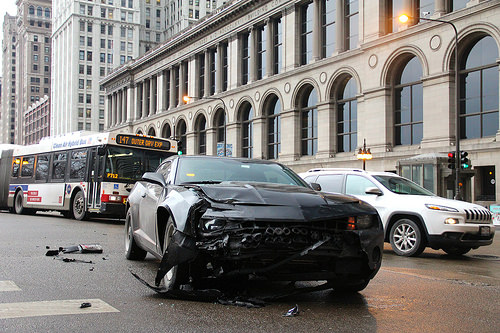
The amount or degree of damage to the soft tissues – that is, the muscles, tendons, ligaments, and disks of the neck — will be the deciding factors as to how much rest vs. activity should be initially performed. If there are no fractures, dislocations or other injuries resulting in an unstable cervical spine (neck), studies have shown rest and a soft collar is actually harmful when compared to early return to activity and exercises. Chiropractic treatment, which essentially exercises the joints of the neck, has been shown to speed recovery when performed sooner rather than later after a whiplash injury.
A handy way to classify the injury includes four categories:
1) Pain with no significant abnormal clinical findings;
2) Pain with mild clinical findings and range of motion loss;
3) Pain with neurological injury (resulting in radiating arm pain);
4) Pain associated with fracture and/or dislocation.
Those suffering with category 1 or 2 injuries should minimize rest, collar use, proceed with life’s activities and not be afraid to do desired activities. More aggressive exercise and, utilizing chiropractic adjustments as soon as possible is very effective in the first two categories of injury. Category 4 (fractures and dislocations) injuries require the use of a rigid collar usually for 4-6 weeks as rest/protection is imperative. Category 3 demands careful monitoring by your chiropractor as neurological problems like arm pain and numbness, muscle strength weakness, must be watched during the healing process. The use of ice is helpful with all four categories of injury and exercise training is important and can be started sooner in the first two categories of injury.
What can you do if you sustain a whiplash injury? The first order of self-help is the use of ice. This is a much better choice over the use of heat as ice reduces swelling and pain while heat can increase swelling because it brings in more blood flow into an already swollen area. The heat may feel good during its use but most patients report the pain either returns shortly thereafter or feels worse. Ice and heat can be alternated but ice should be emphasized by using ice for 10 minutes, heat 5 minutes, and repeat the ice / heat / ice approach starting and ending with ice. One session usually equals 20 minutes, and several sessions can be repeated each day. The old adage of “ice for 24 hours followed by heat” does NOT apply here as ice or “contrast therapy” of ice/heat/ice can be performed for as long as there is pain or, for several weeks or longer. The good news is that you will never hurt yourself by using ice but, you can make it hurt worse by using heat too soon so, when in doubt, use ice! The next, very important, recommendation is to utilize exercises to stretch and strengthen the neck and upper back region. The “general rule” of exercise is slow repetitions staying within “reasonable” boundaries of pain. That is, a good, stretch type of pain is encouraged while avoiding sharp pain. We have discussed several very practical neck stretches and strengthening exercises previously and we will again address this in the future. Posture correction of chin tucks, keeping your head back over your shoulders is very helpful as well. We realize that you have a choice in where you choose for your healthcare services. If you, a friend or family member requires care for whiplash, chiropractic care is a logical first choice and we would be honored to offer our services to you.
Dr. Ward Beecher practices at Beecher Chiropractic Clinic at 1001 Pineloch, Ste 700 Houston, TX 77062. You can schedule an appointment at BeecherChiropractic.com or by calling (281) 286-1300. If you have any questions regarding this blog, please comment below!
Can Whiplash Affect My Memory?
Houston Chiropractor Comments on MTBI:
This is a common complaint we hear as a Houston chiropractor occurring as a result of a whiplash injury, but it’s not commonly known, leaving those who are suffering wondering, “…what’s wrong with me?” Whiplash is an injury that classically occurs as a result of a car crash at any speed, even at low speed! This is because at low speed, there is little to no damage to the car, and the forces from the crash are not absorbed by the crushing metal. As a result, those forces are transferred to the contents inside the car – that is, the passengers. This sometimes results in a significantly greater injury compared to crashes that occur at twice the speed because the latter results in crushing metal. The actual injury that occurs in whiplash is caused by the sudden, rapid movement of the head resulting in varying degrees of injury to the neck, as well as to the contents inside the skull – that is, the brain. The brain literally “bangs” into the inside walls of the skull when the head is rapidly accelerated during a car crash. The resulting injury is a concussion. What’s interesting is that most patients injured in a car crash often don’t mention a concussion nor is it usually asked about at the doctor’s office as other, more obvious injuries are dwelt with. The condition is usually referred to by one of two names: post-concussive syndrome or mild traumatic brain injury (MTBI).
Suffering From Whiplash and MTBI
This can be very embarrassing, frustrating, and scary for patients suffering with MTBI. Other symptoms associated with this include difficulty in focusing (blurred vision), headaches, having difficulty in pronouncing certain words (“tongue twisted”), having difficulty in understanding what was said, difficulty remembering numbers or groups of numbers like phone numbers, addresses, birthdates, and so on. These symptoms can range from mild to severe and can be very disruptive, making work and everyday tasks challenging.
How long does it last? MTBI can completely clear up in 2 to 6 months without problems or, it can hang on for 2 years or longer, and may even become a permanent residual from the car crash. In one study, continued problems after a 2 year time frame were reported in close to 20% of those injured 2 years earlier. This study suggests that about 1 out of 5 may continue to suffer with MTBI and the associated brain-related problems for at least 2 years following a car crash. However, another study reported the long term “higher cognitive function” (such as the ability to communicate through written or spoken language) is usually not affected by whiplash injuries. However, they preface that with by reporting that a more commonly injured group with more mild brain problems was found.
As chiropractors, we are trained to do a thorough history, orthopedic and neurological examination, and ask specific questions about mild traumatic brain injury. It is important to discuss this information with those suffering from whiplash injuries as frequently, MTBI patients think something is “…seriously wrong” and harbor unnecessary anxiety.
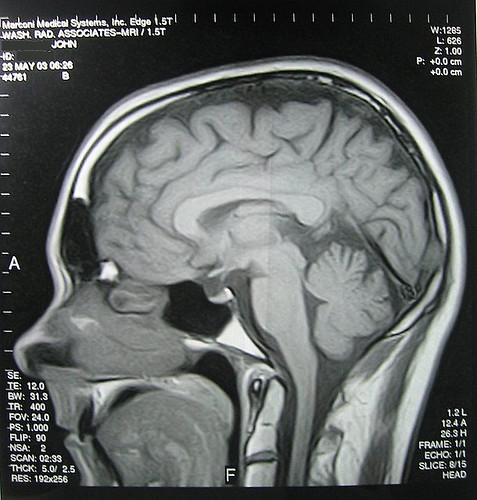
We realize that you have a choice in where you choose for your healthcare services. If you, a friend or family member requires care for MTBI whiplash, chiropractic rehabilitation & care is a logical first choice and we would be honored to offer our services to you.
Dr. Ward Beecher practices at Beecher Chiropractic Clinic at 1001 Pineloch, Ste 700 Houston, TX 77062. You can schedule an appointment at BeecherChiropractic.com or by calling (281) 286-1300. If you have any questions regarding this blog, please comment below!
Can Whiplash Really Happen to YOU?
To download a copy of this week’s newsletter, please click here.
Clear Lake Area Chiropractor Comments: You’re stopped at a red light awaiting a left turn into the grocery store when out of nowhere, you hear the screeching of tires, you turn your head and look into the rear view mirror and see that you’re about to be hit from behind. Then “POW!” The sudden force of the impact propels you back into your seat; your head hits the headrest and then bounces forwards, almost hitting the steering wheel. You feel your body twist due to the angle of the seat belt and your sunglasses fly off and your purse sitting on the seat next to you flies into the dashboard and lands on the floor spilling its contents. You’re not sure what just happened as it all happened so fast. Is this a dream?
Can Whiplash Really Happen?

After collecting yourself and calming down, you get out of the car to inspect the damage and talk to the driver that just ran into you. You notice that right now, you don’t really hurt that much…. but you feel kind of dazed. When you inspect your car, you surprisingly notice very little damage, but it sure felt like your car should be totaled based on the way it felt. The other driver said he was checking the station on the radio and saw you too late. He tried to stop and slammed on the brakes but it was too late. He said, “…I couldn’t have been moving more than 5-10 mph when I hit you!” You ask, “How could this possibly feel so….. hard an impact? Was he lying to me? Do I have Whiplash? Can whiplash really happen?” There certainly wasn’t much damage to your car…maybe he was right??? When he asked you if you would, “…let it go,” and not call the police, you almost agree, but something stops you. Even though there is little car damage and, “…he is a nice guy….,” you just don’t feel right in, “…letting it go.”
Within 15-30 minutes, you’re REALLY HAPPY you didn’t give in and take his advice as by now, your neck is really starting to hurt. You feel kind of nauseated and light headed. Your head is beginning to pound and you feel like you better sit down. When the police officer approaches he seems distant and you’re having difficulty hearing him. Pretty soon, you notice others helping you onto a stretcher and attaching a neck brace prior to taking you to a local emergency room. At the ER, you are confused about the details of the accident but piece together the best you can the events of the evening. They take x-rays, recommend some Advil and ice, and tell you to contact your primary care physician if you have problems. They tell you that you’re going to hurt for a few days and “…that‘s normal.” However, over the next several days, pain intensifies to a point where neck and headache pain is constant, you can’t sleep, your memory seems blurry, you can’t seem to concentrate and loose your place during thought and conversation…. something is REALLY WRONG!
Low Speed Collision Related Injury
This scenario is not atypical of a low speed collision related injury. In fact, the less the car is damaged, the greater the impact is to the contents inside the car (this is called “elastic deformity”). That’s because crushing metal absorbs the energy of the force (ie, “plastic deformity) and if the speed is “…too low” and little metal crushing/energy absorption occurs, the G-forces that occurred during the collision are transferred to the contents inside the vehicle and that force can be significantly greater than a crash that occurs at 2-4 times the 5-10 mph speed. In general, when there is less damage to the car, be alert that the force exerted on the contents is greater than when car damage occurs. This is why when cars crash during a car race, the race car basically falls apart, leaving the driver enclosed in a cage that prevents bodily damage, and they often walk away from the accident.
If you, a loved one, or a friend is struggling with whiplash residuals from a motor vehicle collision, you can depend on receiving an in-depth assessment and therapeutic approach at our chiropractic facility.
Dr. Ward Beecher practices at Beecher Chiropractic Clinic at 1001 Pineloch, Ste 700 Houston, TX 77062. You can schedule an appointment at BeecherChiropractic.com or by calling (281) 286-1300. If you have any questions regarding this blog, please comment below!
The Importance of Seatbelts in Auto Accidents
To download a copy of this newsletter, please click here.
Houston Chiropractor Comments: Whiplash is a very common problem afflicting millions of people each year. In fact, there are more than 6 million car accidents each year in the United States alone. Death associated with car accidents occurs every 12 minutes and each year, motor vehicle collisions (MVC) kill 40,000 people. For people aged between 2 and 34 years old, MVCs are the leading cause of death. Another sobering statistic is somebody is injured in a car crash every 14 seconds and about 2 million people receive permanent injuries in car crashes each year. Over a five-year period, over 25% of ALL drivers were involved in a motor vehicle collision. The cost of car accidents averages $1000 for each American per year resulting in a $164.2 billion total cost each year in the United States. Approximately 250,000 children are injured and car crashes, meaning approximately 700 kids are injured daily. Car crashes are the leading cause of acquired disability. Hopefully, these rather startling statistics have gotten your attention.
In general, the available evidence available is clear – seatbelts save lives! Regarding backseat passengers, wearing a seatbelt is 44% more effective at preventing death than riding unrestrained. Similarly, for those positioned in the rear of a van or sport utility vehicle, the use of rear seatbelts is 73% better at preventing a fatal outcome during a car crash. In more than one half of all fatal car accidents, the victims are not properly restrained. In states where rear seatbelts are required, 85% of adult backseat passengers complied versus states not mandating rear seat seatbelt use where only 66% of the passengers complied. The NHTSA has launched a campaign, “Click It or Ticket” and has provided a guide to seatbelt safety promoting the proper use of the seatbelt and have provided the following safety seatbelts tips:
Seatbelt Tips
- Make sure your seat belt fits snugly. Seat belts worn too loosely can cause broken ribs or injuries to your abdomen.
- Place the lap belt low on your hipbones and below your belly. Never put the lap belt across your belly.
- Place the shoulder belt across the center of the chest between the breasts.
- Never slip the upper part of the belt off your shoulder. Seat belts that are worn too high can cause broken ribs or injuries to your belly.
- The most effective safety protection available today for passenger vehicle occupants is lap/shoulder seat belts combined with air bags.
There is a common myth that seatbelts cause injuries at low speeds and therefore, it is better to not wear the seatbelt when simply traveling in your neighborhood. There is overwhelming evidence in almost all circumstances, seatbelts save lives, even at low speed collisions. Because the forces that occur in low-speed crashes are transferred to the contents due to the lack of crushing metal and less vehicle damage, the occupants of a car struck at a low speed can be thrown about significantly… striking the windshield, side window and other contents inside the car. We realize that you have a choice in where you choose for your healthcare services. If you, a friend or family member requires care for whiplash, chiropractic care is a logical first choice and we would be honored to offer our services to you.
Dr. Ward Beecher practices at Beecher Chiropractic Clinic at 1001 Pineloch, Ste 700 Houston, TX 77062. You can schedule an appointment at BeecherChiropractic.com or by calling (281) 286-1300. If you have any questions regarding this blog, please comment below!

The Body & Mind and Connection of Whiplash?
Clear Lake Chiropractor
Clear Lake Chiropractor Comments: The term “whiplash” refers to an injury to the neck muscles, the muscle attachments (tendons), ligaments, and sometimes the disks that lie between the vertebral bodies of the spine. In a rear-end collision, the cause of whiplash occurs from a sudden, rapid acceleration of the body and neck as the car is pushed forwards. In these first moments following impact, the head remains in the same place while the body is propelled forward. This is followed by a “crack-the-whip” movement of the head and neck when the muscles in the front of the neck stretch like rubber bands and suddenly spring the head forwards, all occurring in less than 1 second. The force on the head and neck is further intensified if the seat back is too springy, or angled back too far. Also, if the headrest is too low, the head may ride over the top and more injury can result.
Treatment of whiplash
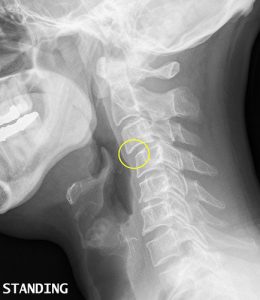
The treatment of whiplash varies from “watchful waiting” to a multidisciplinary team approach that includes neurology, physical therapy, chiropractic, psychology, and possibly surgery (rare). In an article published in the American Journal of Physical Medicine and Rehabilitation, the relationship between clinical, psychological and functional health status factors was investigated in a group of patients with chronic whiplash-associated disorder (WAD). A total of 86 patients with chronic WAD participated in the study and outcomes were tracked using questionnaires that measure pain, disability and psychological issues including depression, anxiety and catastrophizing. Physical examination factors included measuring the cervical range of motion. An analysis of the degree of neck disability and the relative contribution of physical vs. psychological factors revealed catastrophizing and depression played greater roles than did cervical range of motion. This suggests psychological factors play an important role in the outcome of whiplash.
Finding a Chirpractor
The importance of this is that more than just the physical factors like range of motion should be focused on when treating chronic whiplash patients. Answering the patient’s questions, explaining the mechanism of injury and how that relates to their specific condition, and addressing depression, anxiety, coping, and other psychological issues is very important. Discussing treatment goals with patients is also very important. For example, making light of the injury by stating something like, “…you’ll be fine after the treatments,” may harm the patient as anything short of “fine” may be interpreted as failed treatment by the patient. It is also important not to paint too dismal of a picture as that can have negative psychological effects as well, as this may suggest that they will never improve. Explaining the difference between “hurt” and “harm” is of great value to the chronic whiplash patient as they are often told, “if it hurts, don’t do it.” This sends an unfortunate message to the patient that any activity where an increase in pain occurs is “bad” when in fact, that activity may help the patient get better in the long run. This can make or break an acceptable outcome as many may feel like they shouldn’t do anything and this can lead to unemployment, boredom, and the many psychological issues previously described. The best advice is to remain active and try to ignore discomfort by staying within “reasonable activity boundaries.” Reasonable activity tolerance is learned as time passes and trying different activities for different lengths of time. This type of coaching should be at the center of chronic whiplash management rather than over focusing on physical factors such as range of motion. If you would like to know more about whiplash or would like treatment, please contact your Houston chiropractor, Beecher Chiropractic!
What is Chiropractic Treatment of Whiplash?
To download a copy of this week’s newsletter, please click here.
Clear Lake City Chiropractor Comments: Whiplash is basically an injury to the muscles, the muscle attachments (tendons), ligaments, and sometimes the nerves that exit the cervical spine. The degree of injury is highly variable and depends on many factors, some of which include gender/body size (slender woman are especially at risk), awareness of the impending collision, head position at time of impact, the angle of the seat back (bent back is worse that upright), the position of the headrest (too low is common), the amount of vehicle damage (less damage can be worse due to energy transferred to the contents/occupants), the speed of the collision, and many others.
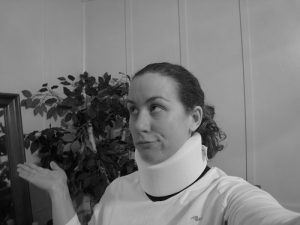
Therefore, when discussing the treatment approaches used by chiropractors, it is not appropriate to generalize since each case is so unique. With that said, when a whiplash patient visits a chiropractor, the first step is obtaining as much information as possible. A thorough history and examination are important in determining the treatment plan and help to determine severity of the injury. Chiropractors often offer different types of treatment that may include: manipulation, physical therapy modalities such as muscle stimulation, relaxation, ultrasound, low level laser therapy, cervical traction, and others. Spinal manipulation (often referred to as an adjustment) addresses joint dysfunction and can be performed with one of several approaches. The first and quite common approach uses a high velocity, low amplitude (quick) approach where joint cavitation (the “crack”) often occurs. Another approach is a low velocity, low amplitude technique where mobilization is used, which is more of a stretch to the end-range of intersegmental (between the vertebrae) motion and rarely, is there joint noise/cavitation.
Muscle relaxation or stimulation is performed for muscle dysfunction, which may include relaxation or stimulation techniques. Gentle stretches to a muscle that has excessive tightness or, repeated contractions of a weak (“inhibited”) muscle is also commonly utilized and very helpful when muscle dysfunction is present.
Exercises are frequently prescribed by chiropractors. These are taught in a supervised manner and when it is safely performed and understood, they can be performed at home, work, outside the office setting. It may require a few sessions to ensure accuracy of the exercise performance. Because of muscle spasm, joint dysfunction, and pain, patients often develop faulty postures or compromised movements that become “bad habits.” To break these “bad habit” positions/postures, stabilization and sensory-motor retraining exercises can be very helpful. These exercises retrain the nervous system to achieve better coordination and control movements and to maintain stability of the weakened neck muscles.
Advice on bend/lift/pull/push and/or work related activity is extremely important in order to avoid repeat exacerbations or “flare-ups” if not properly dwelt within the clinic. Advice on recreational and home related activities is also very important for the same reasons.
The chiropractic whiplash treatment plan is unique for every individual person given the significant number of variable initially discussed. One or more of the approaches discussed may be utilized. If needed, chiropractors often partner with other doctors if there are medication or surgical requirements. If you, a loved one, or a friend is struggling with whiplash residuals from a motor vehicle collision, you can depend on receiving a multi-dimensional chiropractic assessment and therapeutic approach at this office. We sincerely appreciate your confidence in choosing our office for your health care needs!
Dr. Ward Beecher practices at Beecher Chiropractic Clinic at 1001 Pineloch, Ste 700 Houston, TX 77062. You can schedule an appointment with the best chiroprator in Houston or by calling (281) 286-1300. If you have any questions regarding this blog, please comment below!
Whiplash: Where Is My Neck Pain Coming From?
To download a copy of this newsletter, please click here.
Houston Chiropractic Doctor Comments: Last week while driving to work, you’re stopped at a red light and glance in the rearview mirror and notice that a car is approaching from behind way too fast. The next thing you remember is the squeal of the tires and a loud crash with an accompanied sudden jolt as your car is propelled forward by the impact. Your initial reaction is one of shock, wondering is anyone hurt? How bad is my car damaged? Will there be another hit? Should I get out of the car? I’m going to be late for work! Within a few minutes, the police arrive and after about an hour of taking statements from the two drivers and a few witnesses, you decline an ambulance offer to take you to a nearby hospital for an examination as, “…this little stiffness and ache in my neck is no big deal.” Happy you can still drive your car, you arrive at work an hour and a half late. After reviewing the details of the crash with co-workers several times, you begin to notice a headache, your neck stiffening up and movements becoming limited and painful. After another couple of hours and a few Ibuprofen, the neck pain has increased and you now have a whopping headache. You decide, “I better go see my chiropractor to see if something is wrong.”
After the exam and x-rays, the chiropractor shows you a chart and explains the mechanism of injury that usually occurs in a low  speed rear-end collision. A couple of things that were said really hit home in helping you to understand how such a seemingly minor crash can create so much pain. The first is that it is not possible to voluntarily contract a muscle quick enough and “brace” to prevent the acceleration of the head. Upon impact, as the car is propelled forwards, the head initially goes backwards and then when the muscles in front of the neck are stretched to their limits, the head is then “whipped” forwards in a “crack the whip” type of response and all of this takes less than 600-700 milliseconds! Because of the far limits of neck motion being reached during this process, the ligaments that hold the vertebra together are often stretched and/or torn. This can be appreciated on the bending neck x-rays which shows one vertebra sliding forwards on the one below and the angle created being greater when compared to the surrounding vertebra. The second point of discussion that stands out was the fact that your head was rotated at the time of impact from looking in the rearview mirror places the neck at a greater risk of injury because of the twisting motion that occurs during the “crack the whip” process. Another interesting point: because there wasn’t a lot of car damage, the shock and force of the impact was not absorbed by crushing metal and that energy is therefore transferred to the contents in the vehicle, including the occupants. That is why your briefcase ended up on the floor and your glasses flew off during the crash. Another point of discussion was made concerning the difference between genders and the degree of injury, as women are more likely to be injured more severely because of the less muscular and sometimes longer female neck. The degree of injury is also at greater risk when there is osteoarthritis in the neck that pre-exists the crash. An analogy of how a young sapling branch can bend without breaking verses the “old oak branch” which snaps and breaks when its only bent slightly. So, if you are a middle aged, female with a long slender neck with pre-existing arthritis looking in the rearview mirror prior to impact in a rear-end collision, ligament over stretching / tearing is highly probable.
speed rear-end collision. A couple of things that were said really hit home in helping you to understand how such a seemingly minor crash can create so much pain. The first is that it is not possible to voluntarily contract a muscle quick enough and “brace” to prevent the acceleration of the head. Upon impact, as the car is propelled forwards, the head initially goes backwards and then when the muscles in front of the neck are stretched to their limits, the head is then “whipped” forwards in a “crack the whip” type of response and all of this takes less than 600-700 milliseconds! Because of the far limits of neck motion being reached during this process, the ligaments that hold the vertebra together are often stretched and/or torn. This can be appreciated on the bending neck x-rays which shows one vertebra sliding forwards on the one below and the angle created being greater when compared to the surrounding vertebra. The second point of discussion that stands out was the fact that your head was rotated at the time of impact from looking in the rearview mirror places the neck at a greater risk of injury because of the twisting motion that occurs during the “crack the whip” process. Another interesting point: because there wasn’t a lot of car damage, the shock and force of the impact was not absorbed by crushing metal and that energy is therefore transferred to the contents in the vehicle, including the occupants. That is why your briefcase ended up on the floor and your glasses flew off during the crash. Another point of discussion was made concerning the difference between genders and the degree of injury, as women are more likely to be injured more severely because of the less muscular and sometimes longer female neck. The degree of injury is also at greater risk when there is osteoarthritis in the neck that pre-exists the crash. An analogy of how a young sapling branch can bend without breaking verses the “old oak branch” which snaps and breaks when its only bent slightly. So, if you are a middle aged, female with a long slender neck with pre-existing arthritis looking in the rearview mirror prior to impact in a rear-end collision, ligament over stretching / tearing is highly probable.
In summary, it is important to obtain prompt evaluation and treatment by your chiropractor as soon as possible as when time passes without treatment, it is more difficult to bring about a reduction of pain and increased motion and, it will generally take longer. Taking medication for pain only postpones the needed process of restoring movement and function of the neck so that should not be the only treatment. In general, a “wait and watch” approach is not wise in these types of injuries. If you or a loved one is suffering with whiplash, sharing this information may be one of most significant acts of kindness that you can give to those that you care about.
Dr. Ward Beecher practices at Beecher Chiropractic Clinic at 1001 Pineloch, Ste 700 Houston, TX 77062. You can schedule an appointment at BeecherChiropractic.com or by calling (281) 286-1300. If you have any questions regarding this blog, please comment below!
Whiplash – The Cause of Pain
To download a copy of this newsletter, please click here.
Houston Chiropractor Comments: Many patients ask the question: “…why do I hurt so much now, and hardly hurt at all right after the accident?” Another common question is: “…why neck pain after a minor car collision can last so long?”
 A study that investigated chronic pain and dysfunction in whiplash cases reported a soft tissue origin for injuries associated with low-speed collisions. This means the pain comes from the muscles, ligaments, joint capsules, the disk, but not from a pinched nerve that would send pain down the arm and/or create hand numbness or grip weakness. The study also reported the point at which the neck buckles would only take one fifth to one-fourth of the weight of the person’s head (approximately 2.5 to 3 pounds) if one were to remove all of the supporting muscles, ligaments, and joint capsules. With the muscles and soft tissues intact, there is a very complex buckling pattern that occurs in the neck during most rear-end collisions where the lower half of the neck bends opposite to that of the upper half creating an S-shaped curve (when looking at the neck from the side). When this occurs, the vertebrae in the lower half of the cervical spine extend backwards while the upper half flex forwards, stretching the ligaments beyond the maximum elastic point and tissue tearing occurs. When ligaments stretch or strain, microscopic tearing starts at only 3-5% of tissue strain and when the strain reaches 7-8%, the ligament begins to lose its load carrying capacity and more significant tearing occurs. Unfortunately, none of this can be seen on a standard x-ray and usually goes undiagnosed.
A study that investigated chronic pain and dysfunction in whiplash cases reported a soft tissue origin for injuries associated with low-speed collisions. This means the pain comes from the muscles, ligaments, joint capsules, the disk, but not from a pinched nerve that would send pain down the arm and/or create hand numbness or grip weakness. The study also reported the point at which the neck buckles would only take one fifth to one-fourth of the weight of the person’s head (approximately 2.5 to 3 pounds) if one were to remove all of the supporting muscles, ligaments, and joint capsules. With the muscles and soft tissues intact, there is a very complex buckling pattern that occurs in the neck during most rear-end collisions where the lower half of the neck bends opposite to that of the upper half creating an S-shaped curve (when looking at the neck from the side). When this occurs, the vertebrae in the lower half of the cervical spine extend backwards while the upper half flex forwards, stretching the ligaments beyond the maximum elastic point and tissue tearing occurs. When ligaments stretch or strain, microscopic tearing starts at only 3-5% of tissue strain and when the strain reaches 7-8%, the ligament begins to lose its load carrying capacity and more significant tearing occurs. Unfortunately, none of this can be seen on a standard x-ray and usually goes undiagnosed.
Many variables exist that make assessing the amount of tissue damage difficult to predict or understand. One of these variables is the strength and amount of elasticity of a ligament prior to tearing. Also, the age, gender, and phenotype – that is, skinny, normal, or over weight – makes a difference. Generally, due to a reduced muscle mass in a female compared to most males, women are at greater risk of injury. The position of the person in the car, whether a seatbelt was used or not, if the head was turned before impact, if the collision was anticipated prior to impact, the speed at which one person compared to another can voluntarily contract a muscle are all additional factors affecting the degree of injury and corresponding pain. Another factor is the size of the spinal canal (the place where the spinal cord runs from the brain to the low back) as some people are born with narrow canals, making them more susceptible to injury. Other neurological variables include the degree of the excitability of the nervous system as the more excitable, the lower the pain threshold and pain is perceived more quickly. The type of pain from the deep tissues (ligaments, joint capsules, etc) is different than pain arising from superficial tissues as the former lasts longer and doesn’t follow known neurological pathways into an arm. Also, over time, if pain becomes chronic (pain lasting >3 months), a significantly lower pain threshold is found in these cases vs. normal control subjects.
Hence, when discussing your case with our office, it is important that you share your history of the accident, the time it took after the impact for symptoms to be initially noted, whether it is gradually worsening over time, and any other symptom that is unique to your situation that may not have been discussed here.
Dr. Ward Beecher practices at Beecher Chiropractic Clinic at 1001 Pineloch, Ste 700 Houston, TX 77062. You can schedule an appointment with the best chiropractor in Houston or by calling (281) 286-1300. If you have any questions regarding this blog, please comment below!
Minimizing Your Whiplash Risk
Houston Area Chiropractor Comments: While it is hard to prevent someone from crashing their car into your car, there are some things you can do to minimize whiplash injuries.
The first preventive measure is making sure your seat is upright and the head rest touches the top of your head. If there is a lot of distance between your head and the rest, it will do little to help in the event of a collision. Also, if the headrest is too low, in can act as fulcrum, leveraging your neck into a worse position, and increasing injury risk.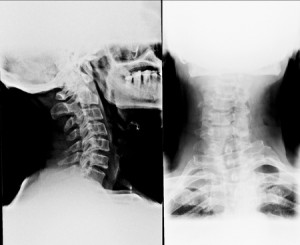
Another thing we can do minimize injury risk is being in the best possible shape prior to the trauma. Research has shown people with good aerobic fitness seem to be more resilient after whiplash accidents.
If you are aware you are about to be hit, it is probably best to remain in a neutral position with eyes facing forward. People with their head turned prior to impact seem to have worse ligament injuries.
If you can afford it, a larger car will lessen the momentum of your vehicle after a collision. There are now vehicles with whiplash-protection seats (e.g. Saab) that dampen the effects of rear end-accidents. Frontal collisions tend to be less severe to the neck if the speeds are equal because the chin can hit the chest preventing forward motion of the neck. Rear-end and side-impact collisions do not have this benefit.
Unfortunately, there are many simply unavoidable risk factors. Women and children seem to be more vulnerable, possibly because of the increased head to neck size ratio. Also if you’ve ever had a head or neck trauma before and or have a degenerated disk in the neck, these factors elevate your risk for a more pronounced injury. Other factors that can slow your recovery include wearing a neck brace/collar, taking to bed rest, or getting vertical traction treatments. Inhibiting movements can feel good initially but is not good in the long term because of decreased muscle function and strength. Getting diagnosed as soon as possible can determine the best course of action for getting you to back to a speedy recovery. Just letting things go is rarely a good solution.
Dr. Ward Beecher practices at Beecher Chiropractic Clinic at 1001 Pineloch, Ste 700 Houston, TX 77062. You can schedule an appointment at BeecherChiropractic.com or by calling (281) 286-1300. If you have any questions regarding this blog, please comment below!
Your Neck is Your Life Line
Chiropractor in Clear Lake Comments: The nervous system is the master control network for your body, directing virtually every function and action, from monitoring your life needs, to precisely responding to threats to your health.
Each system, from your heart and blood vessels, to your digestive and immune systems, is directed through nerve impulses originating in your brain or spinal cord that travel through its protective bony structure: the spinal column.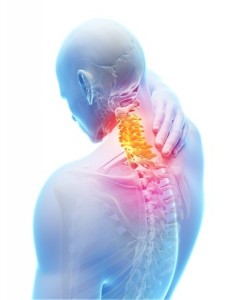
The neck region is the most vulnerable region of the spine to injury. Indeed, even death can be brought through significant trauma to the neck. When the trauma is not fatal, the consequences can still be severe, such as when paralysis strikes.
Most people will not experience these severe injuries, however sprains of the delicate ligaments with subluxation (misalignment) do commonly occur. Despite the injury being smaller, their location (the neck) makes their impact more profound. Functions throughout the body can be impaired when the nerves in the upper neck are compromised.
Within chiropractic, there are specialists who focus their entire care on the uppermost two vertebrae of the spine.
Because every nerve passes through the neck, if irritation or compression is present, virtually any system of the body can be affected. The point being is that a neck disorder will not necessarily just cause neck pain or headache. Dizziness, digestive problems, fatigue, high blood pressure and generally reduced quality of life are some of the symptoms patients commonly experience.
If you have suffered a severe whiplash, you may have noticed far more than neck pain or a stiff neck. Indeed, recent research suggests whiplash needs to more thought of as a whole body disorder.
We take these injuries in our office and address them in both a specific and comprehensive manner. Most patients who have suffered a neck trauma will require x-rays to analyze the posture of their spine. X-rays may also need to be taken in motion to test the stability of your ligaments and to determine precise levels of impaired movements. Without this road map, it is difficult to determine how care should be directed and factors that could influence your long-term prognosis, such as degeneration.
Our health care team is dedicated to drugless natural methods to restore vitality. We try to work with your body with techniques that don’t carry the all too common side effects commonly seen with long-term drug use or surgery. If you’re suffering from neck pain in Houston, we will provide the relief you need and take steps to prevent further damage to your neck and spine.
Dr. Ward Beecher practices at Beecher Chiropractic Clinic at 1001 Pineloch, Ste 700 Houston, TX 77062. You can schedule an appointment with the best chiropractor in houston by calling (281) 286-1300. If you have any questions regarding this blog, please comment below!

